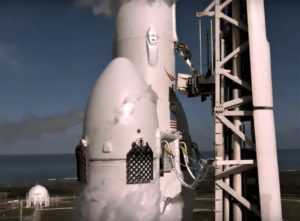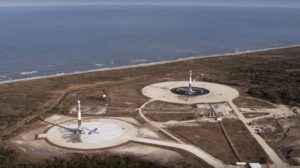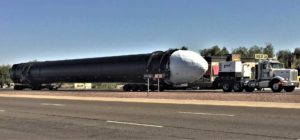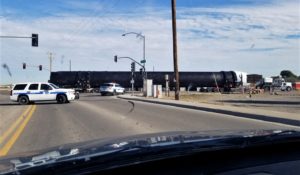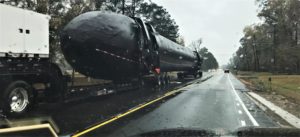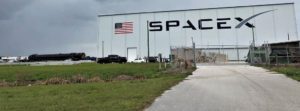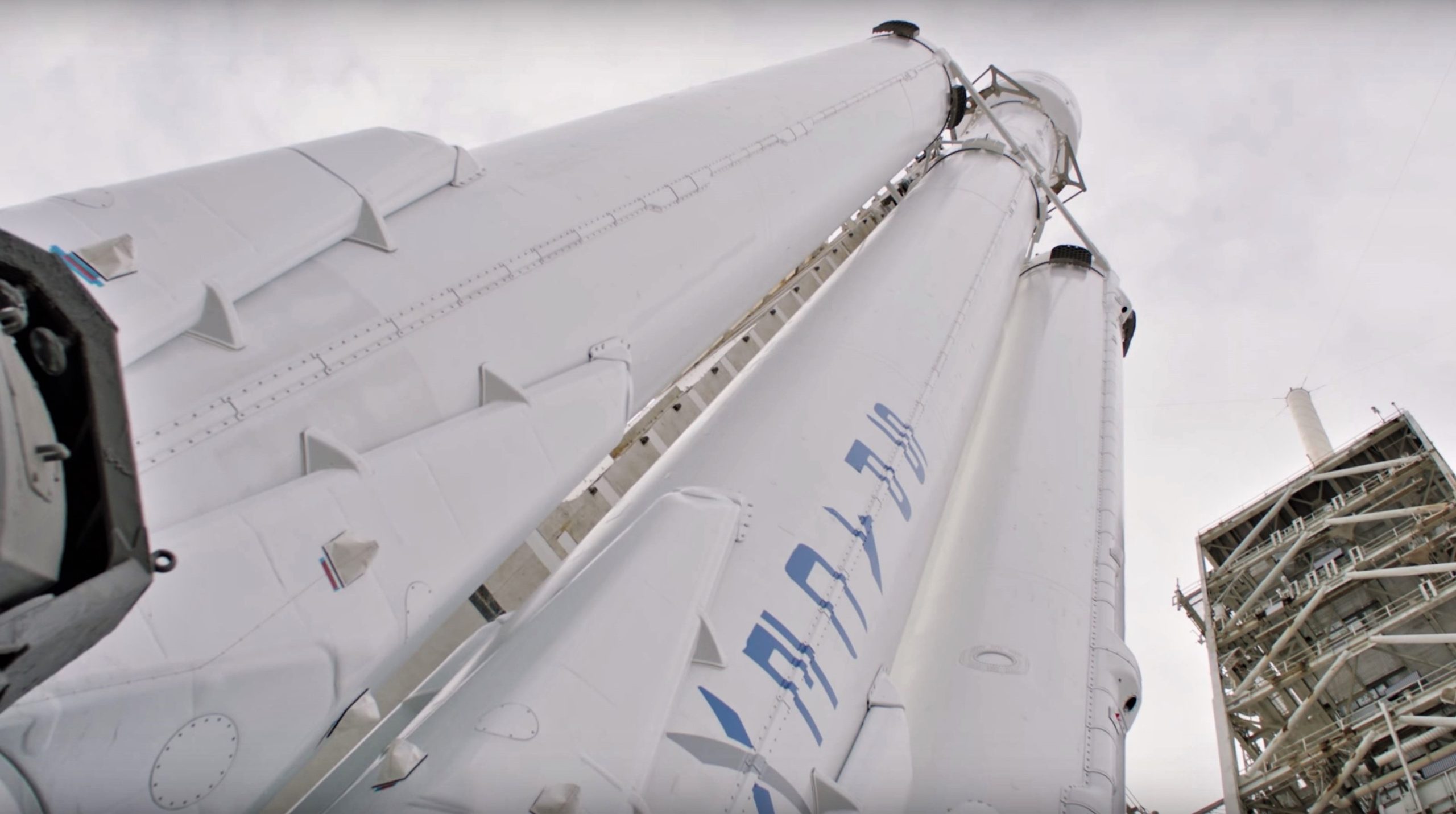
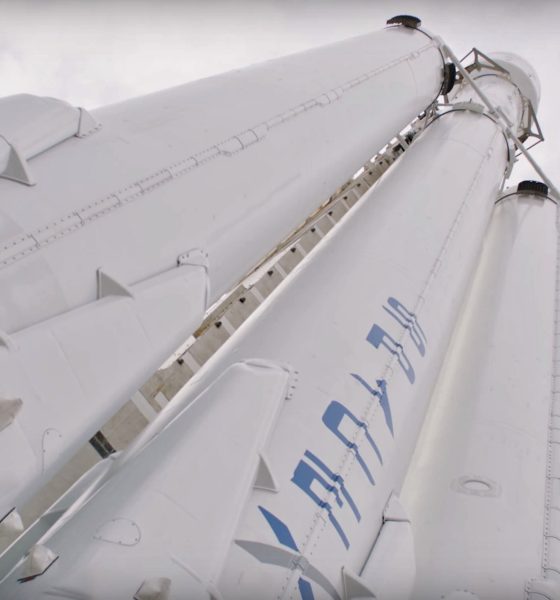
News
SpaceX customer reaffirms third Falcon Heavy mission’s Q2 2019 launch target
Taiwan’s National Space Organization (NSO) has reaffirmed a Q2 2019 launch target for SpaceX’s third-ever Falcon Heavy mission, a US Air Force-sponsored test launch opportunity known as Space Test Program 2 (STP-2).
Set to host approximately two dozen customer spacecraft, one of the largest and most monetarily significant copassengers riding on STP-2 is Formosat-7, a six-satellite Earth sensing constellation built with the cooperation of Taiwan’s NSO and the United States’ NOAA (National Oceanic and Atmospheric Administration) for around $105M. If successfully launched, Formosat-7 will dramatically expand Taiwan’s domestic Earth observation and weather forecasting capabilities, important for a nation at high risk of typhoons and flooding rains.
Formosat-7, the latest generation of the series, is jointly developed by #Taiwan’s National Space Organization and the #US National Oceanic and Atmospheric Administration following an agreement signed in 2010. https://t.co/7hj2ijFutZ
— Asia Times (@asiatimesonline) January 7, 2019
Although Taiwan officials were unable to offer a target more specific than Q2 2019 (April to June), it’s understood by way of NASA comments and sources inside SpaceX that STP-2’s tentative launch target currently stands in April. For a number of reasons, chances are high that that ambitious launch target will slip into May or June. Notably, the simple fact that Falcon Heavy’s next two launches (Arabsat 6A and STP-2) are scheduled within just a few months of each other almost singlehandedly wipes out any possibility that both Heavy launches will feature all-new side and center boosters, strongly implying that whichever mission flies second will be launching on three flight-proven boosters.

To further ramp up the difficulty (and improbability), those three flight-proven Block 5 boosters would have to launch as an integrated Falcon Heavy, safely land (two by landing zone, one by drone ship), be transported to SpaceX facilities, and finally be refurbished and reintegrated for their second launch in no more than 30 to 120 days from start to finish. SpaceX’s record for Falcon 9 booster turnaround (the time between two launches) currently stands at 72 days for Block 4 hardware and 74 days for Block 5, meaning that the company could effectively need to simultaneously break its booster turnaround record three times in order to preserve a number of possible launch dates for both missions.
Look who was waving at passing planes over McGregor today!
A Falcon Heavy side booster on the McGregor test stand for a static fire test. pic.twitter.com/S7af6b0gHk
— NSF – NASASpaceflight.com (@NASASpaceflight) November 18, 2018
If it turns out the USAF is actually unwilling to fly its first Falcon Heavy mission on all flight-proven boosters (a strong possibility) or that that has never been the plan, STP-2’s claimed Q2 2019 target would likely have to slip several months into 2019. This would afford SpaceX more time and resources to build an extra three new Falcon Heavy boosters (two sides, one center), each of which requires a bare minimum of several weeks of dedicated production time and months of lead time (at least for the center core), all while preventing or significantly slowing the completed production of other new Falcon boosters.
The exact state of SpaceX’s Falcon 9 and Heavy production is currently unknown, with indications that the company might be building or have already finished core number B1055 or higher, but it’s safe to say that there is not exactly a lot of slack in the production lines in the first half of 2019. Most important, SpaceX likely needs to begin production of the human-rated Falcon 9 boosters that will ultimately launch the company’s first two crewed Crew Dragons as early as June and August, respectively.
- Falcon Heavy is seen here lifting off during its spectacular launch debut. (SpaceX)
- LZ-1 and LZ-2, circa February 2018. (SpaceX)
- A Falcon Heavy side booster was spotted eastbound in Arizona on November 10th. (Reddit – beast-sam)
- The second Falcon Heavy booster in four weeks was spotted Eastbound in Arizona by SpaceX Facebook group member Eric Schmidt on Dec. 3. (Eric Schmidt – Facebook)
- The second (and third) flight of Falcon Heavy is even closer to reality as a new side booster heads to Florida after finishing static fire tests in Texas. (Reddit /u/e32revelry)
- The next Falcon Heavy’s first side booster delivery was caught by several onlookers around December 21. (Instagram)
If the first Falcon 9 set to launch an uncrewed Crew Dragon (B1051) is anything to go off of, each human-rated Falcon 9 is put through an exceptionally time-consuming and strenuous range of tests to satisfy NASA’s requirements, requiring a considerable amount of extra resources (infrastructure, staff, time) to be produced and readied for launch. B1051 likely spent 3+ months in McGregor, Texas performing checks and one or several static fire tests, whereas a more normal Falcon booster typically spends no more than 3-6 weeks at SpaceX’s test facilities before shipping to its launch pad.
Ultimately, time will tell which hurdles the company’s executives (and hopefully engineers) have selected for its next two Falcon Heavy launches: an extraordinary feat of Falcon reusability or a Tesla-reminiscent period of Falcon production hell?
For prompt updates, on-the-ground perspectives, and unique glimpses of SpaceX’s rocket recovery fleet check out our brand new LaunchPad and LandingZone newsletters!

News
Tesla FSD fleet is nearing 7 billion total miles, including 2.5 billion city miles
As can be seen on Tesla’s official FSD webpage, vehicles equipped with the system have now navigated over 6.99 billion miles.

Tesla’s Full Self-Driving (Supervised) fleet is closing in on almost 7 billion total miles driven, as per data posted by the company on its official FSD webpage.
These figures hint at the massive scale of data fueling Tesla’s rapid FSD improvements, which have been quite notable as of late.
FSD mileage milestones
As can be seen on Tesla’s official FSD webpage, vehicles equipped with the system have now navigated over 6.99 billion miles. Tesla owner and avid FSD tester Whole Mars Catalog also shared a screenshot indicating that from the nearly 7 billion miles traveled by the FSD fleet, more than 2.5 billion miles were driven inside cities.
City miles are particularly valuable for complex urban scenarios like unprotected turns, pedestrian interactions, and traffic lights. This is also the difference-maker for FSD, as only complex solutions, such as Waymo’s self-driving taxis, operate similarly on inner-city streets. And even then, incidents such as the San Francisco blackouts have proven challenging for sensor-rich vehicles like Waymos.
Tesla’s data edge
Tesla has a number of advantages in the autonomous vehicle sector, one of which is the size of its fleet and the number of vehicles training FSD on real-world roads. Tesla’s nearly 7 billion FSD miles then allow the company to roll out updates that make its vehicles behave like they are being driven by experienced drivers, even if they are operating on their own.
So notable are Tesla’s improvements to FSD that NVIDIA Director of Robotics Jim Fan, after experiencing FSD v14, noted that the system is the first AI that passes what he described as a “Physical Turing Test.”
“Despite knowing exactly how robot learning works, I still find it magical watching the steering wheel turn by itself. First it feels surreal, next it becomes routine. Then, like the smartphone, taking it away actively hurts. This is how humanity gets rewired and glued to god-like technologies,” Fan wrote in a post on X.
News
Tesla starts showing how FSD will change lives in Europe
Local officials tested the system on narrow country roads and were impressed by FSD’s smooth, human-like driving, with some calling the service a game-changer for everyday life in areas that are far from urban centers.

Tesla has launched Europe’s first public shuttle service using Full Self-Driving (Supervised) in the rural Eifelkreis Bitburg-Prüm region of Germany, demonstrating how the technology can restore independence and mobility for people who struggle with limited transport options.
Local officials tested the system on narrow country roads and were impressed by FSD’s smooth, human-like driving, with some calling the service a game-changer for everyday life in areas that are far from urban centers.
Officials see real impact on rural residents
Arzfeld Mayor Johannes Kuhl and District Administrator Andreas Kruppert personally tested the Tesla shuttle service. This allowed them to see just how well FSD navigated winding lanes and rural roads confidently. Kruppert said, “Autonomous driving sounds like science fiction to many, but we simply see here that it works totally well in rural regions too.” Kuhl, for his part, also noted that FSD “feels like a very experienced driver.”
The pilot complements the area’s “Citizen Bus” program, which provides on-demand rides for elderly residents who can no longer drive themselves. Tesla Europe shared a video of a demonstration of the service, highlighting how FSD gives people their freedom back, even in places where public transport is not as prevalent.
What the Ministry for Economic Affairs and Transport says
Rhineland-Palatinate’s Minister Daniela Schmitt supported the project, praising the collaboration that made this “first of its kind in Europe” possible. As per the ministry, the rural rollout for the service shows FSD’s potential beyond major cities, and it delivers tangible benefits like grocery runs, doctor visits, and social connections for isolated residents.
“Reliable and flexible mobility is especially vital in rural areas. With the launch of a shuttle service using self-driving vehicles (FSD supervised) by Tesla in the Eifelkreis Bitburg-Prüm, an innovative pilot project is now getting underway that complements local community bus services. It is the first project of its kind in Europe.
“The result is a real gain for rural mobility: greater accessibility, more flexibility and tangible benefits for everyday life. A strong signal for innovation, cooperation and future-oriented mobility beyond urban centers,” the ministry wrote in a LinkedIn post.
News
Tesla China quietly posts Robotaxi-related job listing
Tesla China is currently seeking a Low Voltage Electrical Engineer to work on circuit board design for the company’s autonomous vehicles.

Tesla has posted a new job listing in Shanghai explicitly tied to its Robotaxi program, fueling speculation that the company is preparing to launch its dedicated autonomous ride-hailing service in China.
As noted in the listing, Tesla China is currently seeking a Low Voltage Electrical Engineer to work on circuit board design for the company’s autonomous vehicles.
Robotaxi-specific role
The listing, which was shared on social media platform X by industry watcher @tslaming, suggested that Tesla China is looking to fill the role urgently. The job listing itself specifically mentions that the person hired for the role will be working on the Low Voltage Hardware team, which would design the circuit boards that would serve as the nervous system of the Robotaxi.
Key tasks for the role, as indicated in the job listing, include collaboration with PCB layout, firmware, mechanical, program management, and validation teams, among other responsibilities. The role is based in Shanghai.
China Robotaxi launch
China represents a massive potential market for robotaxis, with its dense urban centers and supportive policies in select cities. Tesla has limited permission to roll out FSD in the country, though despite this, its vehicles have been hailed as among the best in the market when it comes to autonomous features. So far, at least, it appears that China supports Tesla’s FSD and Robotaxi rollout.
This was hinted at in November, when Tesla brought the Cybercab to the 8th China International Import Expo (CIIE) in Shanghai, marking the first time that the autonomous two-seater was brought to the Asia-Pacific region. The vehicle, despite not having a release date in China, received a significant amount of interest among the event’s attendees.
